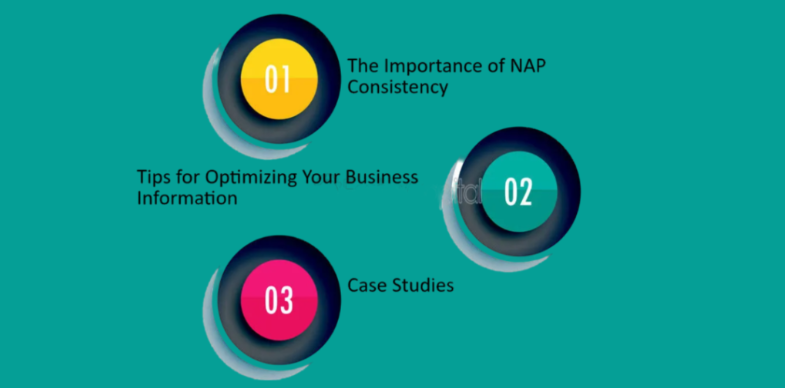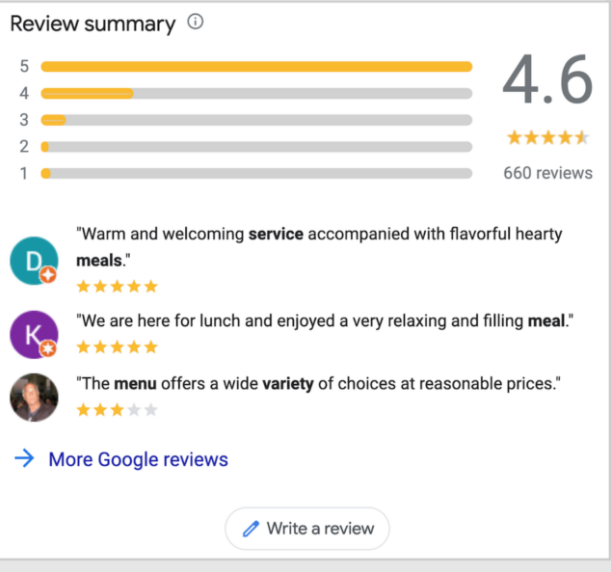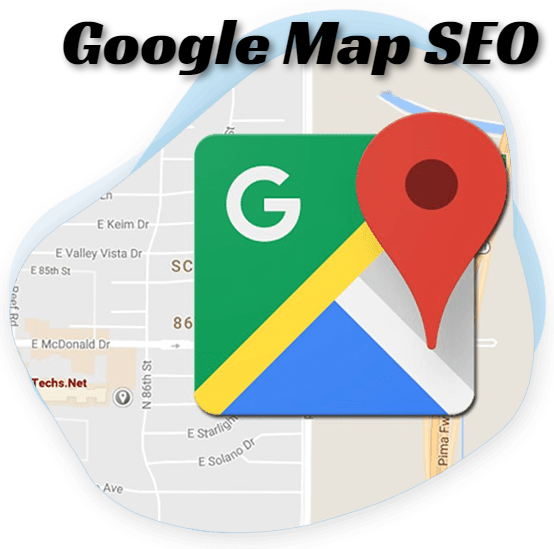In today’s digital landscape, local search has become increasingly important for businesses aiming to reach nearby customers. Google Maps, as a powerful tool for local businesses, offers a platform for businesses to enhance their visibility and attract potential customers. Understanding and optimizing Google Maps SEO is crucial for dominating local search and ensuring that businesses appear prominently in relevant search results.
Google Maps has solidified its place as the dominant entry point for local search, with a significant percentage of users relying on it to find “near me” business information. This underscores the importance of leveraging Google Maps SEO to ensure businesses are prominently featured in local search results. Additionally, optimizing for Google Business Profile (GBP) and ensuring NAP consistency are crucial steps in enhancing visibility and attracting local customers.
Understanding Google Maps SEO
Google Maps SEO involves various factors that influence a business’s rankings in local search results. These factors include Google My Business (GMB) optimization, NAP consistency (Name, Address, Phone Number), reviews and ratings, location relevance, and keywords. Understanding and leveraging these factors are crucial for businesses aiming to improve their visibility in local search results.
Google My Business (GMB) Optimization: Optimizing the GMB profile is crucial for local businesses to enhance their visibility on Google Maps. This involves thoroughly filling out the profile with accurate business information, such as the business name, address, phone number, website link, hours, and a detailed business description.
NAP Consistency (Name, Address, Phone Number): Ensuring consistency in the business’s name, address, and phone number across various online platforms is essential for Google Maps SEO. Consistent NAP information helps avoid confusion for customers and signals the business’s location to improve its ranking.
Reviews and Ratings: The quality and quantity of reviews on the GMB profile significantly impact a business’s Google Maps rankings. Encouraging positive reviews and effectively managing customer feedback is essential for improving local search visibility.
Location Relevance and Proximity: Factors such as location relevance, geotagging, and local link building play a crucial role in improving a business’s visibility in local search results. Proximity to the user’s location also influences Google Maps rankings.
Keywords and Relevance: Incorporating relevant keywords into the GMB profile and localized content is important for improving a business’s relevance in local search results. Keyword optimization enhances the business’s visibility to users searching for relevant products or services in their vicinity.
Understanding and effectively leveraging these key factors is essential for businesses aiming to dominate local search results and maximize their visibility on Google Maps.
Setting Up and Optimizing Google My Business (GMB) Profile

Setting up and optimizing a Google My Business (GMB) profile involves several essential steps to ensure maximum visibility and relevance in local search results. Here’s a detailed breakdown of the process:
A. Creating a GMB Profile
Creating a GMB profile is the initial step in establishing a business’s presence on Google. This involves signing in to the GMB dashboard with a Google account and clicking on the business to begin the profile creation process.
B. Optimizing Business Information for Search
- Accurate Business Name, Address, and Phone Number: Providing precise and consistent NAP information is crucial for local SEO and GMB optimization. This information forms the foundation for a business’s local search visibility.
- Choosing the Right Categories: Selecting relevant business categories helps Google understand the nature of the business and improves its relevance in local search results.
- Adding Business Hours, Website, and Other Relevant Details: Including comprehensive business information, such as operating hours, website links, and a detailed business description, enhances the profile’s completeness and relevance.
C. Utilizing GMB Features for Better Visibility
- Posts and Updates: Regularly posting announcements, offers, events, and products through the GMB dashboard can improve a business’s visibility and engagement on Google.
- Photos and Videos: Adding high-quality photos and videos to the GMB profile enhances visual appeal and provides potential customers with a better understanding of the business’s offerings.
- Q&A Section: Engaging with the Q&A section by providing detailed and helpful responses can improve the profile’s relevance and provide valuable information to potential customers.
By following these steps and optimizing the GMB profile with accurate information and engaging content, businesses can significantly enhance their visibility in local search results and attract potential customers in their vicinity.
NAP Consistency: Ensuring Accurate Business Information Across the Web

Ensuring NAP (Name, Address, Phone Number) consistency across various online platforms is crucial for local SEO success. Inconsistent NAP data can negatively impact a business’s local search presence and consumer trust. Here’s a breakdown of the importance of NAP consistency and strategies for managing NAP information:
A. The Importance of NAP Consistency
NAP consistency is vital for validating a business across a wide range of sources and ranking well in local search results. It ensures that potential customers can find accurate information about the business, thereby avoiding frustration and potential loss of leads. Search engines take into account even minor details, emphasizing the significance of accurate and up-to-date business information across different listings, websites, social media, and other resources.
B. Tools and Strategies for Managing NAP Information
- Local Business Directories: Listing a business on local directories helps build its authority and authenticity in the eyes of search engines, contributing to improved local search visibility.
- Citations and Online Listings: Consistent citations across various online platforms are essential for reinforcing a business’s online presence and enhancing its credibility in local search results.
C. Monitoring and Correcting Inconsistent Information
Regularly monitoring and correcting inconsistent NAP data is crucial for maintaining a strong local search presence. This involves ensuring uniformity in the business name, address, and phone number across all online citations, directories, social media profiles, and web pages. By prioritizing NAP consistency, businesses can facilitate Google’s ability to connect the dots and strengthen their local SEO fundamentals.
By implementing these strategies and tools, businesses can uphold NAP consistency, bolster their local search presence, and build trust with potential customers, ultimately contributing to their local SEO success.
Leveraging Reviews and Ratings for Google Maps SEO

Customer reviews and ratings play a significant role in local search rankings and the overall success of businesses in the digital landscape. Understanding the impact of reviews, encouraging positive feedback, and effectively managing customer reviews are essential components of Google Maps SEO.
A. The Impact of Reviews on Local Search Rankings
Customer reviews have a substantial influence on local search rankings, particularly in the Local Pack, the three most prominent listings at the top of a local search result. According to industry experts, reviews are the second most important ranking factor, surpassing proximity. This underscores the outsized role that reviews play in local search rankings and the significance of review management in a business’s SEO strategy.
B. Encouraging and Managing Customer Reviews
- Strategies for Soliciting Positive Reviews: Businesses can encourage positive reviews by providing exceptional customer experiences and actively requesting feedback from satisfied customers. Educating customers on the importance of leaving reviews and communicating how their feedback helps improve the business can be effective strategies.
- Responding to and Addressing Negative Reviews: Effectively addressing negative reviews is crucial for businesses. Responding promptly, empathetically, and constructively to negative feedback demonstrates a commitment to customer satisfaction and can mitigate the impact of unfavorable reviews.
C. The Role of Review Signals in Google Maps SEO
Review signals, including the quantity, quality, and sentiment of customer reviews, significantly impact a business’s visibility and credibility in local search results. Leveraging customer reviews not only influences a business’s local search rankings but also contributes to building trust and confidence in its products and services.
By understanding the impact of reviews on local search rankings, actively encouraging positive feedback, and effectively managing customer reviews, businesses can enhance their online reputation, build trust with potential customers, and improve their visibility in local search results.
Location Relevance and Proximity
Understanding the importance of location in local search and implementing strategies to improve location relevance and proximity is crucial for businesses aiming to enhance their visibility in local search results. Here’s a detailed breakdown based on the provided search results:
A. Understanding the Importance of Location in Local Search
The proximity of a business to a user’s location is a critical factor in local search rankings. Google’s local search algorithm considers relevance, distance, and prominence to provide the best match for a user’s search. Proximity to the searcher is now considered the new #1 ranking factor in local search results, surpassing traditional factors such as links, website content, citations, and reviews. This emphasizes the significance of location relevance and proximity in local search rankings.
B. Strategies for Improving Location Relevance
- Geotagging and Location-Based Keywords: Incorporating geotagged content and location-based keywords in a business’s online presence can enhance its relevance in local search results. This includes optimizing website content, metadata, and online listings with location-specific information.
- Local Link Building: Building local links from relevant and authoritative sources within the business’s vicinity can strengthen its local search presence and improve location relevance.
C. Utilizing Proximity to Improve Search Rankings
Utilizing proximity to the searcher’s location is essential for businesses to appear in relevant search results. Location-based marketing can drive foot traffic for local businesses by informing users of proximity and enticing them with offers. Additionally, displaying location search results by journey time and leveraging travel time data as a feature within search relevance algorithms significantly improves the relevance of search results.
By understanding the importance of location in local search, implementing strategies to improve location relevance, and utilizing proximity to improve search rankings, businesses can enhance their visibility in local search results and effectively reach potential customers in their vicinity.
Keyword Research and Relevance in Google Maps SEO

Keyword research and relevance play a crucial role in optimizing a business’s presence on Google Maps. Understanding the significance of local keyword research, incorporating relevant keywords into the Google My Business (GMB) profile, and creating localized content are essential for improving visibility in local search results.
A. Conducting Keyword Research for Local Search
Keyword research for local search involves identifying and analyzing keywords that are relevant to a business’s location and target audience. This process provides insights into the actual search terms used by potential customers, helping businesses tailor their content strategy and marketing efforts to align with local search trends and user intent.
B. Incorporating Relevant Keywords into Your GMB Profile
Incorporating relevant keywords into the GMB profile is essential for improving the profile’s visibility in local search results. Optimizing the business description, attributes, and other GMB details with location-specific keywords can help Google match the GMB profile to relevant queries, ultimately attracting more eyes on the business and reassuring potential customers that the business offers what they are looking for.
C. Creating Localized Content for Better Relevance
Creating localized content that incorporates relevant keywords and addresses the specific needs and interests of the local audience is crucial for improving relevance in local search results. This includes optimizing website content, metadata, and external content with locally oriented, intent-driven keywords and logical internal and external links to provide answers to the audience’s search queries.
By conducting thorough keyword research for local search, incorporating relevant keywords into the GMB profile, and creating localized content, businesses can enhance their visibility and relevance in local search results, ultimately attracting more local customers and driving business growth.
Tracking and Analyzing Google Maps SEO Performance
Tracking and analyzing the performance of Google Maps SEO is essential for understanding the effectiveness of local search strategies and making informed decisions to improve visibility and engagement. Utilizing tools such as Google Analytics and Google Search Console, tracking key performance indicators (KPIs), and monitoring local action conversion are crucial components of this process.
A. Utilizing Google Analytics and Google Search Console
Utilizing Google Analytics and Google Search Console provides valuable insights into a business’s performance in Google Search results. These tools offer metrics that show changes in search traffic over time, the sources of traffic, and other important performance indicators that help businesses understand their visibility and engagement in local search results.
B. Tracking Key Performance Indicators (KPIs)
- Impressions and Clicks: Monitoring the number of impressions (how many times a user saw a non-paid, organic result for the site in the search results) and clicks provides insights into the visibility and click-through rate of the business in local search results.
- Ranking Positions: Tracking the ranking positions of relevant keywords in local search results helps businesses understand their visibility and competitiveness in the local market.
- Conversion Tracking for Local Actions: Tracking local actions conversions, such as phone calls, direction requests, and website visits originating from local search results, provides insights into the effectiveness of the business’s local search presence in driving meaningful interactions with potential customers.
By tracking these KPIs, businesses can gain a comprehensive understanding of their performance in Google Maps SEO and make data-driven decisions to optimize their local search strategies for improved visibility and engagement.
These insights can help businesses refine their local search optimization efforts, enhance their local search presence, and ultimately drive more meaningful interactions with potential customers in their local area.
Advanced Strategies for Dominating Local Search

Based on the provided search results, here’s a breakdown of the advanced strategies for dominating local search:
A. Implementing Schema Markup for Local Businesses
- Importance of Schema Markup: Schema markup plays a crucial role in local search engine optimization (SEO) by providing a substantial competitive advantage. It helps search crawlers comprehend a landing page and deliver relevant information in the search engine results pages (SERPs). Google has reiterated that schema helps search crawlers do their job more effectively, emphasizing its impact on local SEO.
- Benefits of Schema Markup: Implementing schema markup for local businesses can lead to rich results for local landing pages, increasing click-through rates (CTR) and improving relevance and proximity signals by clearly defining a local business’s address, services, and other relevant information. It can also help businesses become eligible for rich results in organic search, ultimately improving local rankings and visibility.
B. Exploring Local SEO Tools and Resources
- Google SEO Starter Guide: Exploring the Google SEO starter guide provides an overview of search engine optimization essentials, offering foundational knowledge that can have a noticeable impact on local SEO.
- Local Business Structured Data: Leveraging local business structured data can impact local listings by indicating physical addresses, opening hours, accepted payment types, and more. This markup can be implemented on sites with brick-and-mortar locations, contributing to improved local visibility.
C. Staying Updated on Google Maps Algorithm Changes
- Adapting to Algorithm Changes: Staying updated on Google Maps algorithm changes is crucial for adapting local search strategies to evolving search algorithms. Google’s algorithm changes can impact local search rankings and visibility, making it essential for businesses to stay informed and adjust their strategies accordingly.
- Implementing and Testing Schema Markup: After adding and publishing local business schema to a website, it’s important to crawl and test the schema markup using Google’s Search Console to measure the website’s search traffic performance and make adjustments as needed. Monitoring the results of schema and making necessary adjustments is essential, especially as Google changes its schema approach and if anything in the business listing changes.
By implementing schema markup for local businesses, exploring local SEO tools and resources, and staying updated on Google Maps algorithm changes, businesses can position themselves to dominate local search and effectively reach their target audience in their local area.
In conclusion, mastering Google Maps SEO is a multifaceted endeavor that demands a holistic approach and continuous adaptation to the evolving digital landscape. Key strategies such as implementing schema markup for local businesses, utilizing local SEO tools and resources, and staying updated on Google Maps algorithm changes are essential for achieving and maintaining visibility in local search results. It is crucial to recognize that local search optimization is an ongoing process, requiring persistent efforts to update and optimize content, monitor performance metrics, and stay abreast of industry developments. Emphasizing the ongoing nature of local search optimization underscores the need for businesses to remain proactive and agile in their approach, ensuring that they can adapt to changes and maintain their competitive edge in the local search arena.

